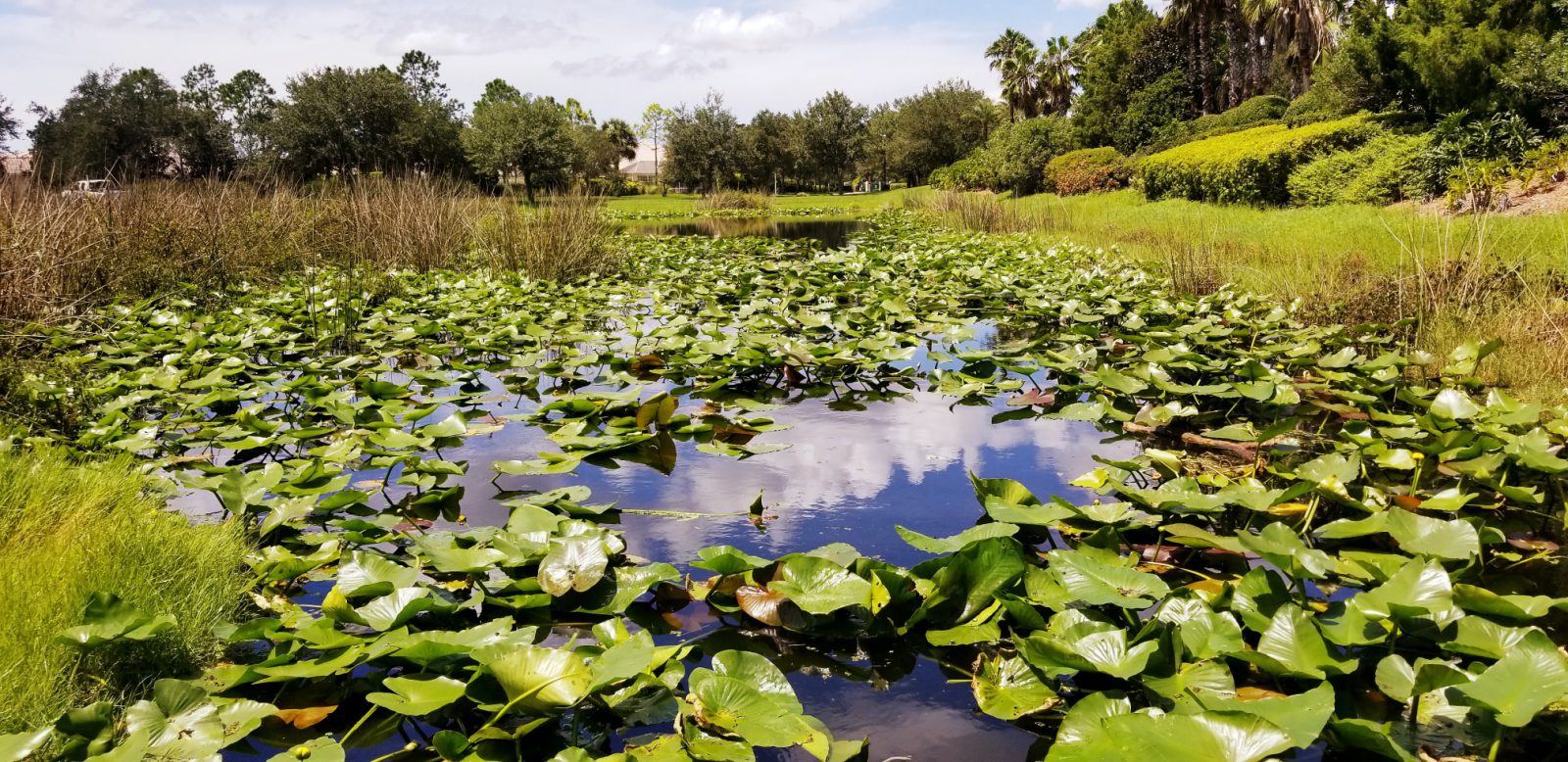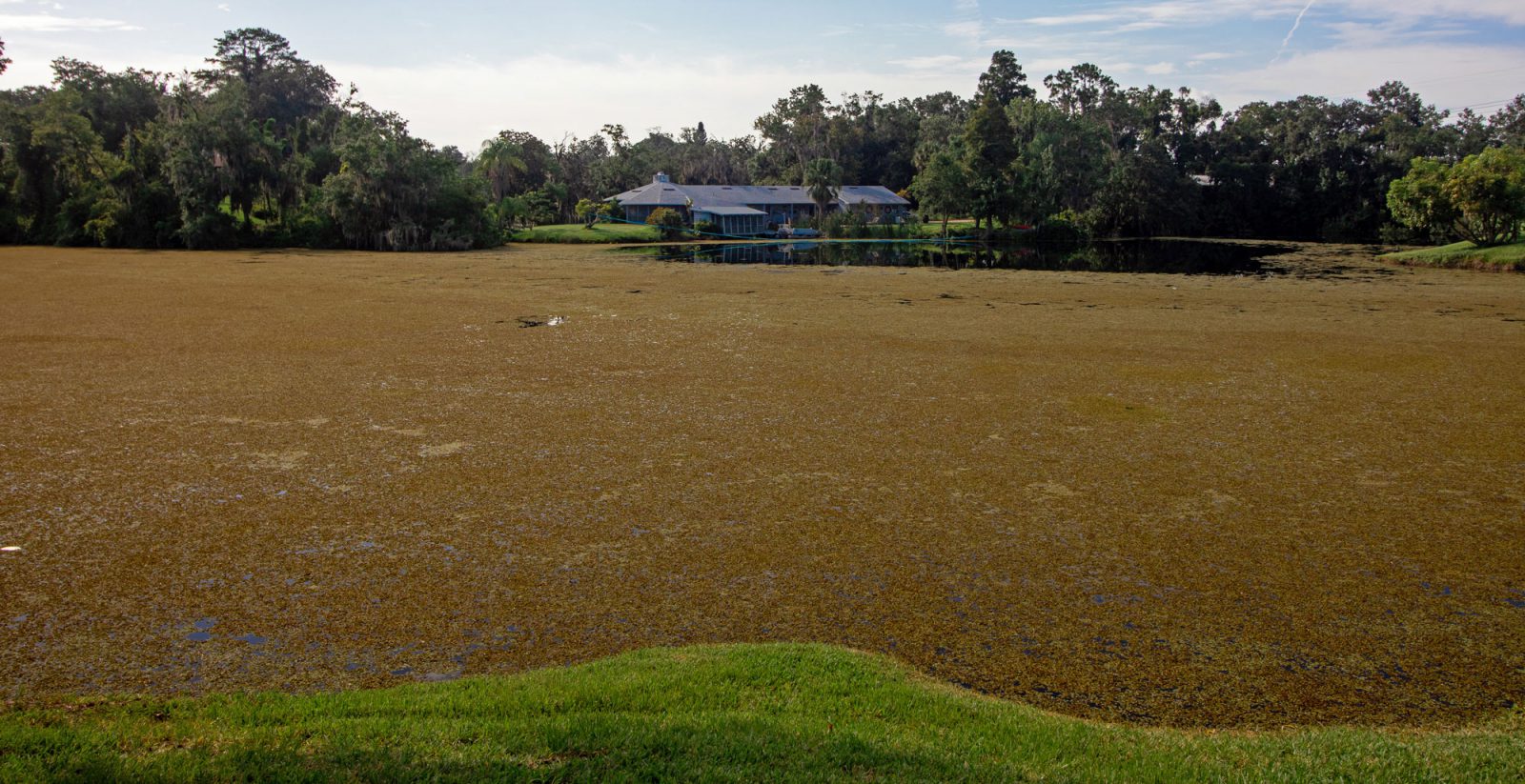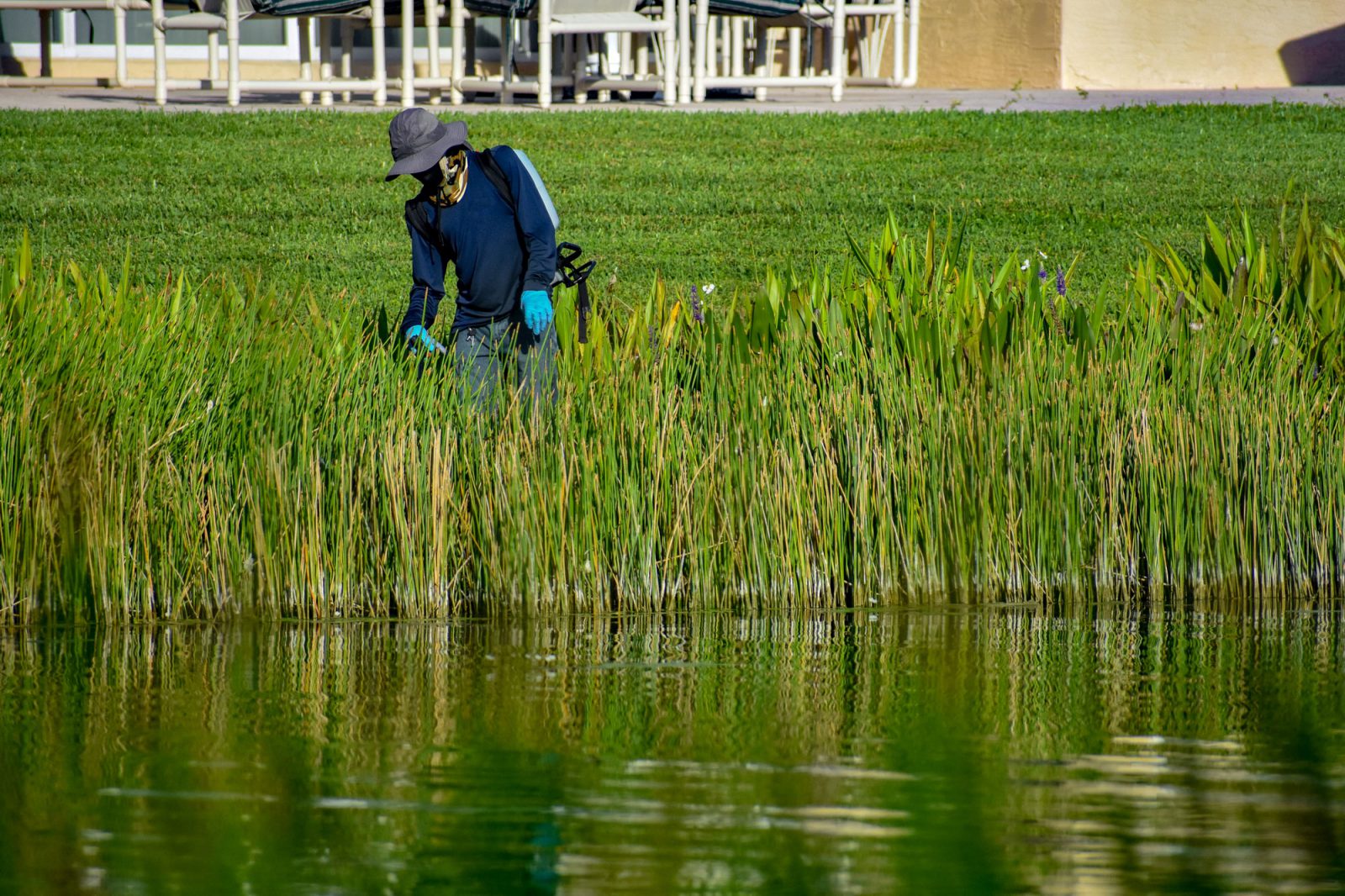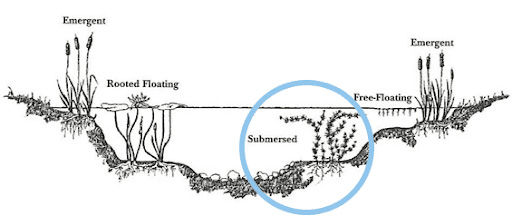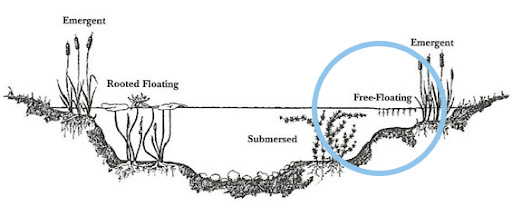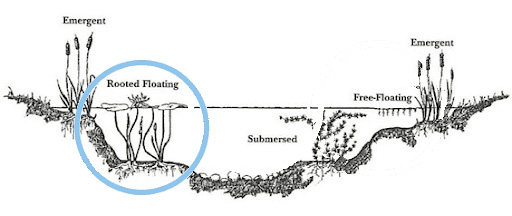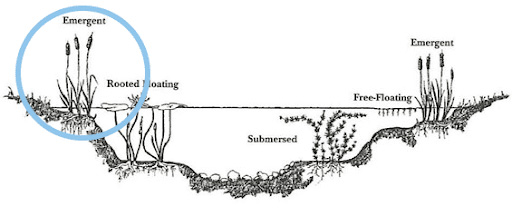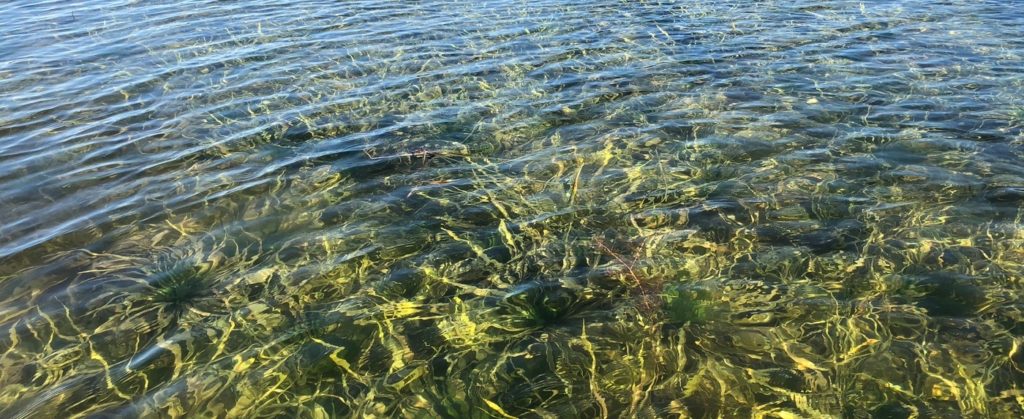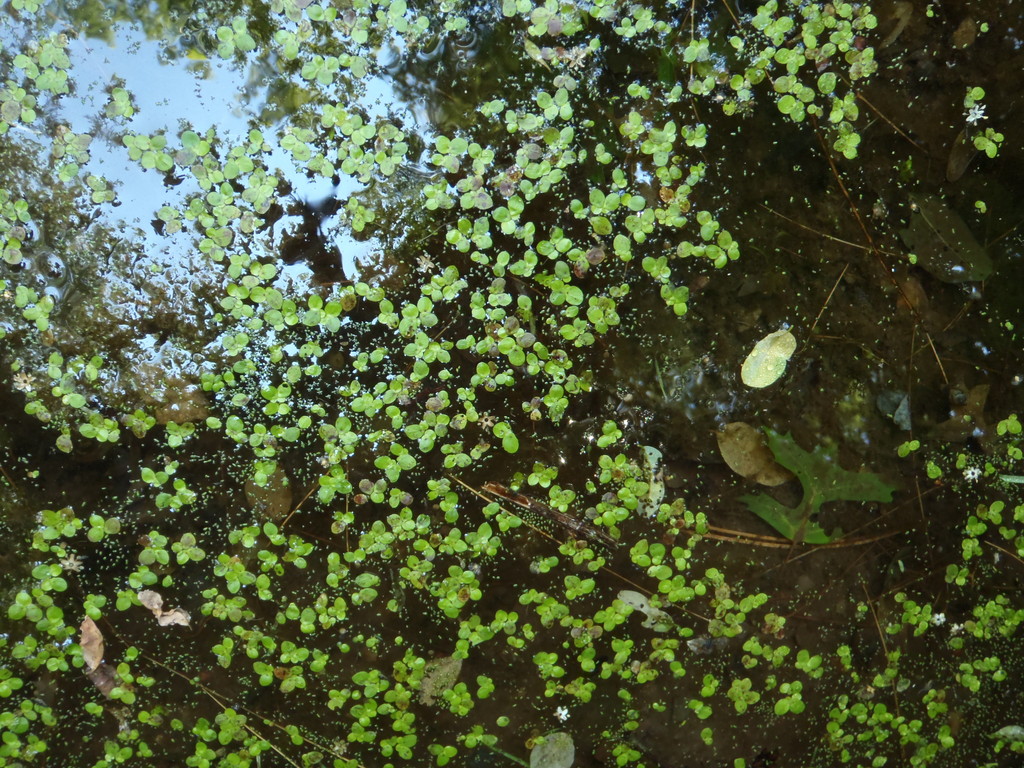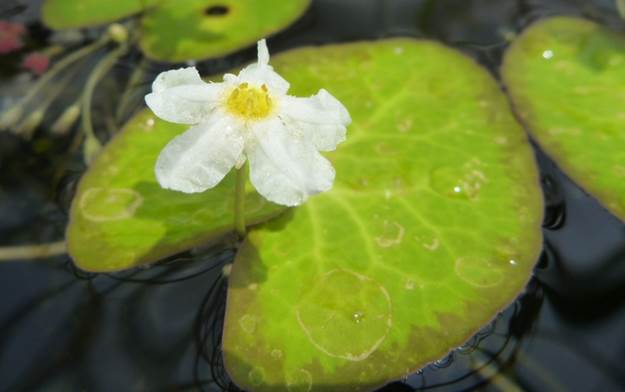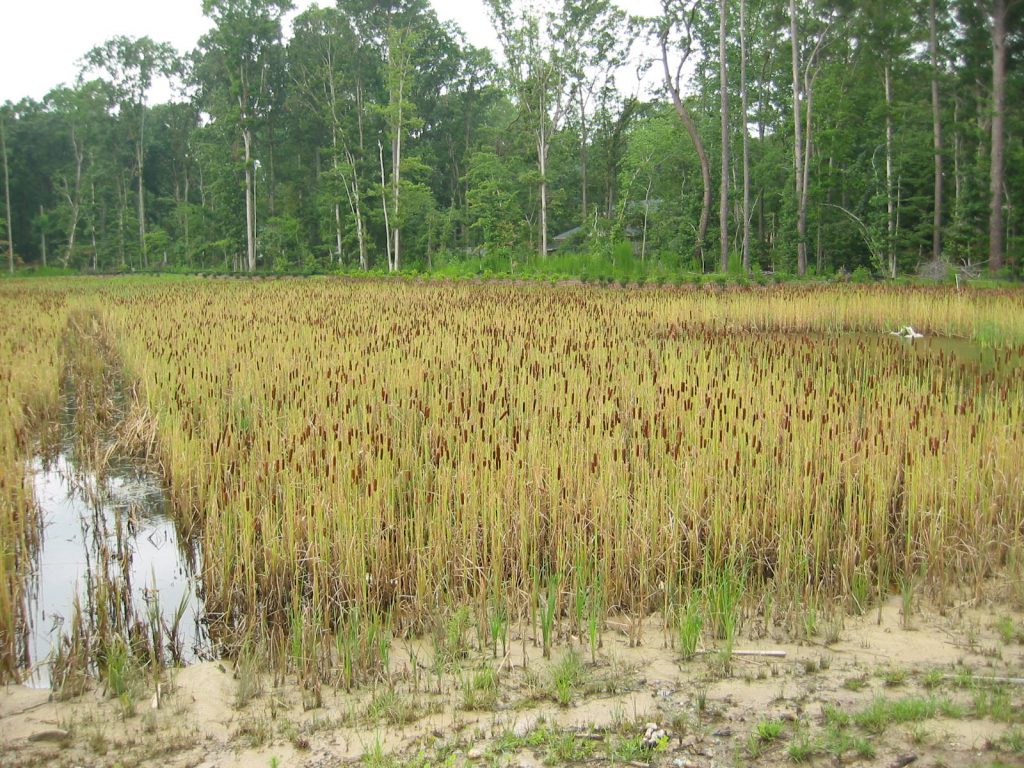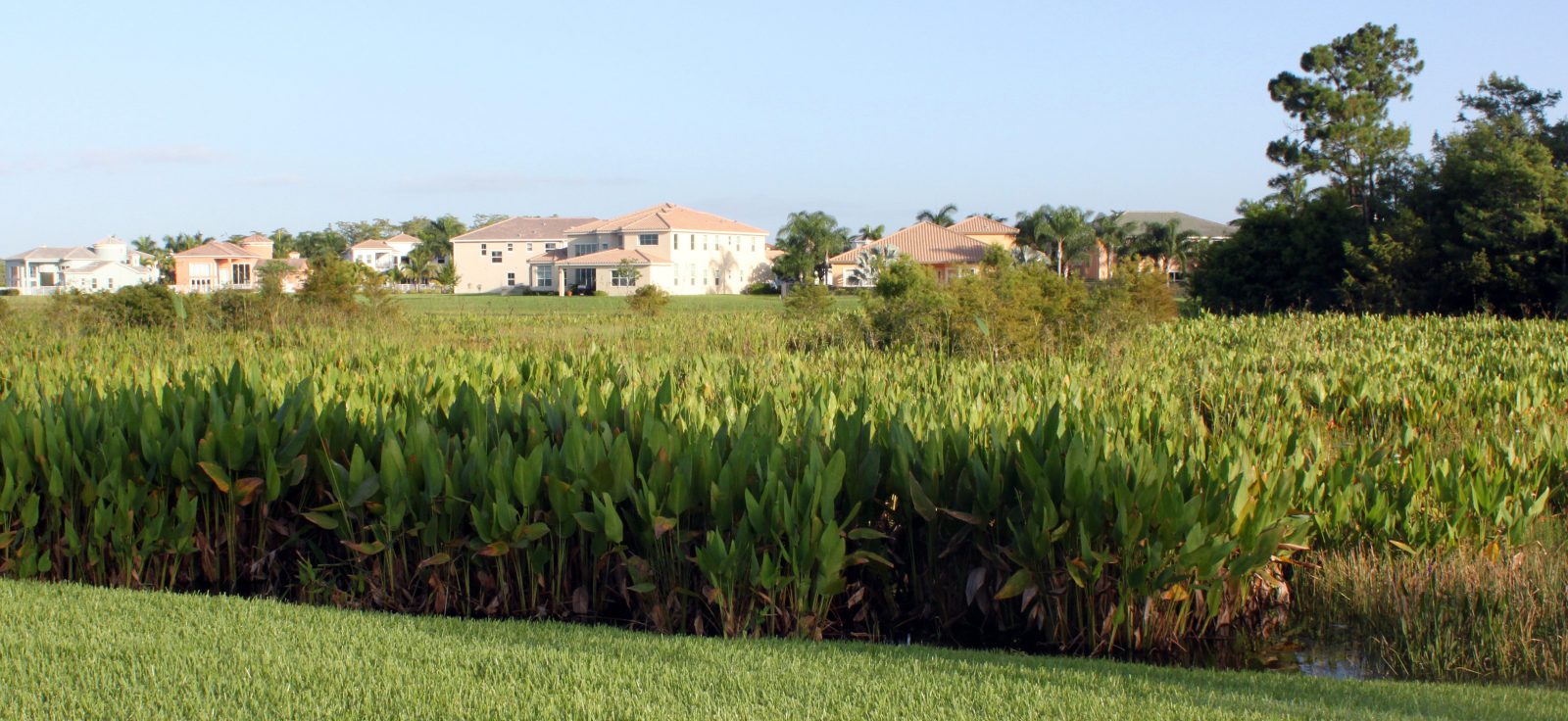
The Guide to Native and Invasive Aquatic Plants and Weeds
The health, well-being, and aesthetic value of any waterbody largely relies on its aquatic plants. This refers to any type of vegetation that grows in water, whether that’s saltwater or freshwater in creeks, rivers, ponds, and lakes. Every plant species has unique characteristics that enable them to thrive in their environments, but overgrowth of these plants or the presence of invasive species can wreak havoc on lakes or ponds if they are not properly maintained.
The Outcomes of Invasive Plant Growth
This can lead to many problems, especially in community associations. Explosive growth of aquatics plants can clog stormwater pond equipment, increasing the risk of flooding and shoreline damage. Floating plant masses can also block sunlight and cause water to become stagnant, which may degrade water quality conditions and kill beneficial species that keep the ecosystem in a balanced state. Unbalanced waterbodies are more hospitable to toxic algae and other dangers. And as these problems increase in intensity, so do complaints from residents.
The best way to avoid this vicious cycle is to prevent it in the first place. Property managers can successfully preserve community waterbodies by partnering with professionals who have the tools and expertise to keep aquatic plants in check. This starts with understanding the defining features of nuisance and aquatic vegetation, and the most effective ways to manage them:
What's the Difference Between A Native Aquatic Plant & An Invasive Aquatic Plant?
Before diving into the types of aquatic plants, it is important to make a distinction between beneficial aquatic plants versus invasive aquatic weeds or plant species.
Invasive aquatic plants have the following characteristics:
- Sometimes brought to waterbodies for aesthetic purposes
- Often spread via the movement of boats and recreational equipment
- Presence and overgrowth can cause environmental harm, Harmful Algal Blooms (HABs) and impact recreational use
Native aquatic plants have the following:
- Naturally found in the waterbody or transferred with no detrimental effects
- Can still have negative impacts if not properly managed
- It is important for any waterbody management plan to take both types of species into consideration.
What Are The Four Types of Aquatic Plants?
There are four main categories of aquatic plants:
- Submerged
- Rooted Floating
- Free-Floating
- Emergent.
Submerged Lake and Pond Plants
As the name implies, submerged aquatic plant species grow under the water with roots in the bottom of the waterbody. Most of their vegetative mass is under the water’s surface. This type is known to be especially effective at oxygenating the water – taking carbon dioxide from the water and releasing oxygen.
Muskgrass is a beneficial submerged plant for ponds that contain excess nutrients as it consumes a large amount of phosphorus – all while serving as a food and habitat for aquatic life. It can be identified by its thin, straw-like stem that will turn flaccid when broken (as opposed to snapping or bending).
An invasive submerged species is one you may have heard of, hydrilla. With long, branching stems and teeth-like leaves, hydrilla can break apart and form large floating mats. This species can also grow in deep or shallow water, allowing it to spread quickly.
Free-Floating Lake and Pond Plants
Free-floating aquatic plants have no roots within the bottom of the waterbody, although their roots do reach into the water to absorb nutrients and act as filters. Since they are unattached, they can withstand movement from wind, waves, and boats. As such, these tend to be very small and typically are found in nutrient-rich waters.
An example of a common free-floating plant is duckweed. Duckweed consists of many single, flat oval leaves (about ¼ of an inch long) which float on the waterbody’s surface. While this aquatic plant serves as a food source for waterfowl and aquatic life, it can be a nuisance for recreational use, and overgrowth may result in oxygen depletion and fish kills.
Water hyacinth, a free-floating plant, is also one of the most infamous invasive aquatic water hyacinth plants, particularly in Floridian waters. This is due to its fast-growing capabilities that allow it to cover waterbodies quickly and effectively, impeding travel and recreational use. They can be identified by their prominent purple flower with a yellow spot.
Rooted-Floating Lake and Pond Plants
Rooted-floating aquatic plants are rooted in the waterbody’s sediment, and typically have leaves that float on the water’s surface. Since they are attached to the ground and still reach the surface for many of their nutrients, rooted-floating plants tend to be found in shallower waters with little to no water movement.
Waterlilies are an example of rooted-floating plants that most people are familiar with thanks to their vibrant green pads and white or yellow flowers. But, as pretty as they may be, waterlilies should be grown in moderation to keep them from overgrowing and covering the surface of the pond, thereby eliminating oxygenation.
Emergent Lake and Pond Plants
Emergent aquatic plant species grow deep roots within the waterbody’s sediment, while the bulk of their mass – leaves and flowers of the plants – grow above or spread out over the water’s surface. They not only offer aesthetic value, but also shade and cover for fish and other aquatic life.
Cattails, which grow 5 to 10 feet in height with a dense, dark brown, cigar-like shape on their top, are an emergent plant that can assist in keeping lakes and ponds healthy. Cattails filter runoff into waterbodies, provide nesting environments for nearby wildlife and also serve as a food source. Still, these emergent plants spread quickly and can turn a shoreline into a marsh.
Water primrose, an invasive emergent plant in ponds and ditches, is sword-shaped, about 6 inches long, covered in small soft hairs, and topped by yellow flowers. While this plant can provide food and shelter for aquatic life and fish, it can grow out of control without proper management.
Managing Aquatic Vegetation
Whether or not a species is native or invasive, all plants require some level of monitoring and maintenance. To help curb moderate growth, professionals may recommend rebalancing water quality conditions with solutions like nutrient remediation, biological bacteria, and fountains and aerators. Explosive growth may require more impactful tools like bioengineered shorelines, mechanical hydro-raking, or EPA-registered herbicides, which are highly safe and effective when applied by a licensed professional.
No matter the type of waterbody or target species, all lakes and ponds can benefit from ongoing management. Annual management programs are tailored to address the unique needs of a waterbody, while also aligning with the goals and budget of stakeholders. Property managers can find great success by partnering with a lake management provider that specializes in annual management, so they can spend more time and funds improving other amenities around the community.
How to Achieve A Weed-Free Waterbody
SOLitude Lake Management is a nationwide environmental firm committed to providing sustainable solutions that improve water quality, enhance beauty and preserve natural resources.
SOLitude’s team of aquatic scientists specializes in the development and execution of customized lake, stormwater pond, wetland and fisheries management programs. Services include water quality testing and restoration, algae and aquatic weed control, installation and maintenance of fountains and aeration systems, shoreline erosion control, muck and sediment removal and invasive species management. SOLitude partners with homeowners associations, golf courses, private landowners, businesses and municipalities. SOLitude Lake Management is part of Rentokil, a leading business services company, operating across the United States, Canada and Puerto Rico.
For more information, visit SOLitude Lake Management at solitudelakemanagement.com, and connect on Facebook, LinkedIn and Twitter.








